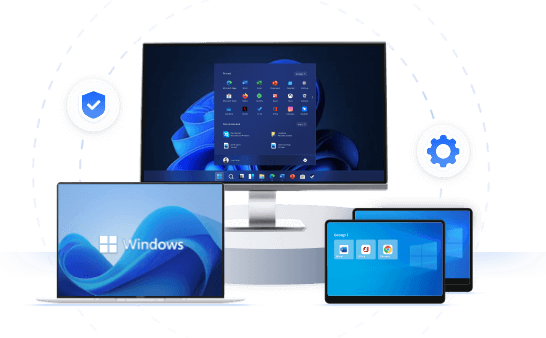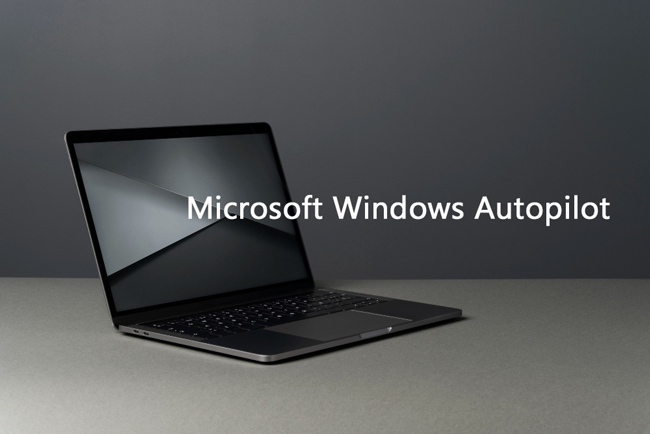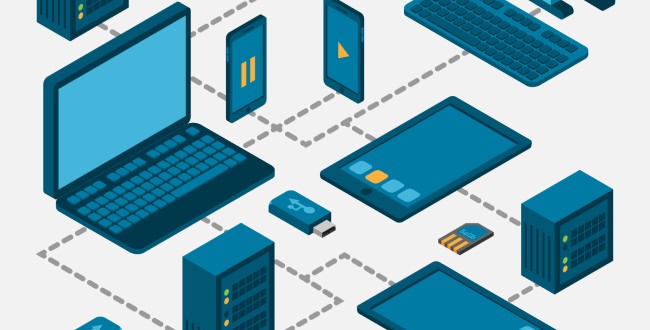Windows Devices Management
- Deploy Windows devices with ease.
- Simplified the application management.
- Set up kiosk mode for Windows devices.
- Protect devices' security with configured files.

Microsoft, as the market leader in operating systems, offers an innovative tool known as Windows Autopilot that makes device deployment and configuration much simpler for businesses. Instead of manual work or human intervention during deployment processes, which often take hours of effort for most organizations, Windows Autopilot automates this whole process to save both time and effort for the organization.
At its core, Windows Autopilot uses cloud technology to allow IT admins to preconfigure new devices before reaching users. Once a device is turned on and connected to the internet, it will immediately join an organization's Azure Active Directory (AAD) and be configured with necessary settings, apps, as well as policies without physically accessing devices directly.

Windows Autopilot stands out among organizations for the exceptional out-of-the-box experience it delivers to end users. By following an organization's rules and specifications, this technology ensures each device meets individual user needs, whether these users be frontline workers, remote employees, or managers.
Windows Autopilot also provides multiple deployment methods, from self-deployment mode and user-driven deployment methods to white glove deployment techniques. This platform provides companies with greater freedom and choice when it comes to selecting which method best meets their requirements and preferences, whether distributing devices on a large or small scale.
So, now you have an answer to the question, "What is Microsoft Autopilot?"Let's look into whether this platform is free of cost.
One of the most typical topics raised while discussing Windows Autopilot is its budgetary implications. Windows Autopilot is not an independent product but rather a function bundled with some Microsoft license subscriptions. For enterprises that currently use Microsoft 365 or Microsoft Intune, Windows Autopilot is usually offered at no extra charge.
Although Windows Autopilot is free with these subscriptions, other components of the deployment process, such as Azure Active Directory Premium license orMicrosoft Intune licenses, may incur additional fees. Thinking, "What is Autopilot Intune?" Well, it is a cloud-based service UEM that helps employees to be productive while keeping the corporate data protected.
Remember, you need a compatible MDM for Windowsto use Microsoft Autopilot.
In addition, enterprises may decide to use third-party services or technologies to improve their Windows Autopilot deployment experience, which may involve additional expenditures. As a result, although Windows Autopilot is free with qualified subscriptions, companies must carefully analyze their license and deployment needs to determine the total cost of using Windows Autopilot in their environment.
Getting the answer to "What is Windows Autopilot?" is not enough; exploring its features is also vital. Windows Autopilot has numerous core attributes that make it an effective solution for speeding device deployment and administration inside enterprises. Let's look at each of these qualities in depth:
Self-service deployment enables end users to configure their devices themselves without IT assistance, using Windows Autopilot as a self-service strategy. Customers simply unbox and power up the new device before following simple on-screen directions to complete the setup quickly and effortlessly. This self-service strategy not only minimizes strain on IT managers but also allows end users to quickly get up and running with their devices for increased productivity.
Windows Autopilot automates device registration into an organization's Azure Active Directory (AAD) and Microsoft Intune. This simply means that any time a new device connects to the internet, it instantly registers with both systems. Automatic registration will cut down on manual intervention while making sure devices are quickly integrated into its management infrastructure.

Profile-based deployment enables IT managers to develop configuration profiles that outline the settings, programs, and rules that will be installed on devices during setup. These profiles may be customized according to user groups within a business - for instance; IT administrators might create different profiles for sales teams, marketing teams, and executives to ensure each group gets access to appropriate settings and software.
Zero-touch deployment takes automation to an unprecedented level by eliminating human intervention during setup processes. Zero-touch deployment enables devices to be preconfigured and distributed directly to end users; all that's necessary to begin setup is turning on their device. This hands-off method saves both time and effort when provisioning devices, helping enterprises expand deployment operations more efficiently.
Windows Autopilot uses cloud-based management tools to give centralized control and visibility over deployed devices. IT administrators may remotely control devices using the Microsoft Endpoint Manager interface, which allows them to apply rules, install apps, and monitor device status and compliance. Cloud-based management streamlines device management chores, lowers the need for on-premises infrastructure and allows IT managers to successfully control devices from any location with an internet connection.
Windows Autopilot streamlines the device provisioning process by combining cloud-based technology with preconfigured options. Here's a step-by-step explanation of how Windows Autopilot operates:
The procedure starts with the registration of devices in the organization's Azure Active Directory (AAD). This may be done manually by IT administrators or automatically with device providers who enable Windows Autopilot. During registration, each device is granted a unique hardware ID that allows it to be identified and managed inside the organization's IT infrastructure.
IT administrators may generate configuration profiles using Microsoft Endpoint Manager (formerly known as Microsoft Intune) or other management solutions. These profiles provide the settings, programs, and rules that will be applied to the devices during setup. Configuration profiles may be tailored to the individual requirements of various user groups or departments within an organization.
Once a device has been registered and a configuration profile assigned, it is available for deployment to end users. The setup procedure may differ significantly depending on the deployment situation (self-deploying mode, user-driven mode, or white glove deployment). However, in all circumstances, the device connects to the internet and starts the Windows Autopilot setup process.
During the setup phase, the device obtains its assigned configuration profile from the cloud-based management service. The configuration profile is then applied to the device, which configures settings, install programs, and enforces the rules provided in the profile.
Finally, the end user completes the setup procedure by following easy on-screen prompts. Depending on the deployment situation, the user may be involved in various stages of the setup process. In self-service deployment situations, the user has complete control over the setup process, while zero-touch deployment scenarios may be totally automated.
The installation of Windows Autopilot in a company has several benefits, including increased IT efficiency and user satisfaction.
Windows Autopilot dramatically cuts deployment times down by automating device provisioning and setup for IT managers. This saves time for admin as well as new employees in the organization.
IT managers using Windows Autopilot can create standard configuration profiles that will be deployed evenly across the enterprise's devices. This makes sure that each device adheres to company rules while decreasing configuration errors or security threats.
Windows Autopilot makes it possible for end users to begin using new devices immediately by providing an out-of-the-box experience that requires minimal configuration or setup steps. This eventually increases productivity since employees can focus on performing their duties rather than dealing with configuration issues.
Windows Autopilot offers many advantages to businesses looking to streamline device deployment and administration. From modernizing device provisioning procedures to increasing organizational efficiencies and end-user satisfaction, Windows Autopilot serves businesses well. Hope now you know what is Microsoft Autopilotand why it is vital for your organization.

Leave a Reply.